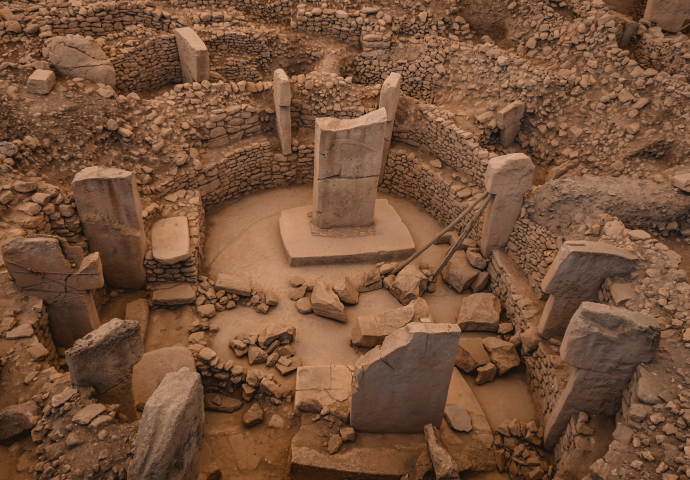Intro
What is structural engineering? Before answering this question, let's first define what a structure is. The coffee shop, office building, and home you're reading this in—all of them are structures. Civil infrastructure like bridges and tunnels also fall under the category of structures. Structural engineering involves the analysis and design of structures to ensure their safety and efficiency, taking into account material properties, loading conditions, and structural stability. Therefore, structural engineering has played and will continue to play a crucial role in societal development and creating safe environments.
In this content, let's explore how structural engineering has evolved from ancient times to the present, highlighting important events, milestones, and key figures.
History of Structural Engineering Timeline
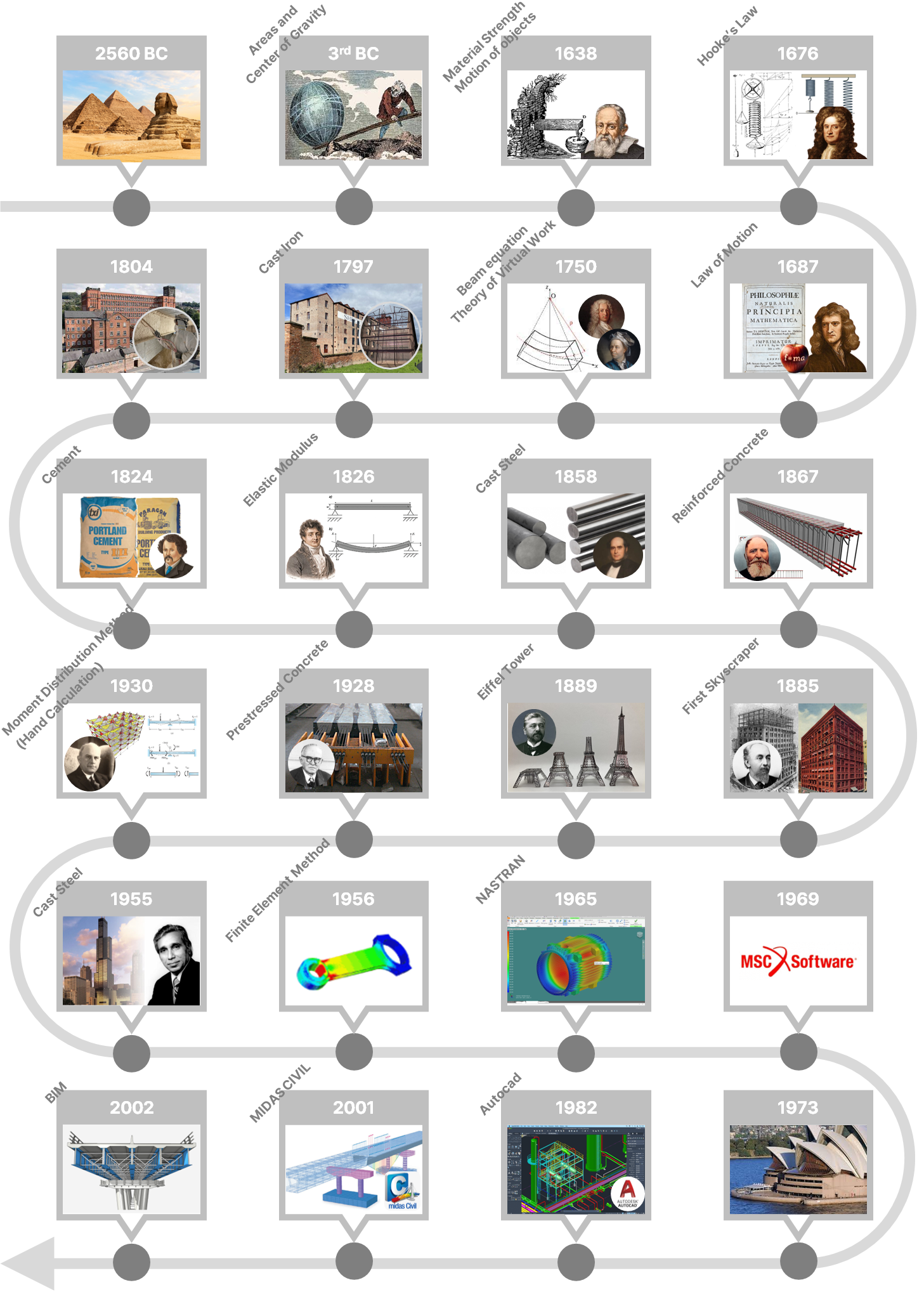 History of Structural Engineering Timeline
History of Structural Engineering Timeline
1. BC
9500-8000 BC Göbekli Tepe | Türkiye

Göbekli Tepe is the oldest structure in the world that we have found to date, dating back to 9500-8000 BC. It's almost miraculous that anything has survived to this day. Göbekli Tepe is characterized by its stone pillars erected in circular patterns, with the tallest pillars reaching up to 5.5 meters. Each pillar weighs between 10-20 tons, and when viewed from above, the pillars form a perfect triangle, implying the existence of engineering even before the advancement of science over 12,000 years ago. For more information, refer to "Did Engineering exist before 12,000 years ago?"
2700 BC Step Pyramid of Djoser | Imhotep

Even if you haven't seen the pyramids in person, you've probably seen them in photos. These pyramids were built approximately 5000 years ago, and the reason you can see them in pictures or may have even visited them in person is that they were constructed very stably by Imhotep, the first-named architect in history. This pyramid is characterized by their step-like structure and are considered the oldest monumental stone structure in Egypt.
2560 BC The Great Pyramid of Giza | Hemiunu (presumed)
 The Great Pyramid of Giza
The Great Pyramid of Giza
Maybe this pyramid is the one we commonly know. The Great Pyramid of Giza stands as a defining symbol of Egypt and is the only Wonder that still exists among the ancient Seven Wonders of the World. The original height from the base to the peak was around 147 meters, and it It held the title of the tallest man-made structure for over 3,800 years until the construction of the Lincoln Cathedral in England in the early 14th century. Refer to this photo. It shows a comparison of the heights of major structures up to the mid-19th century.
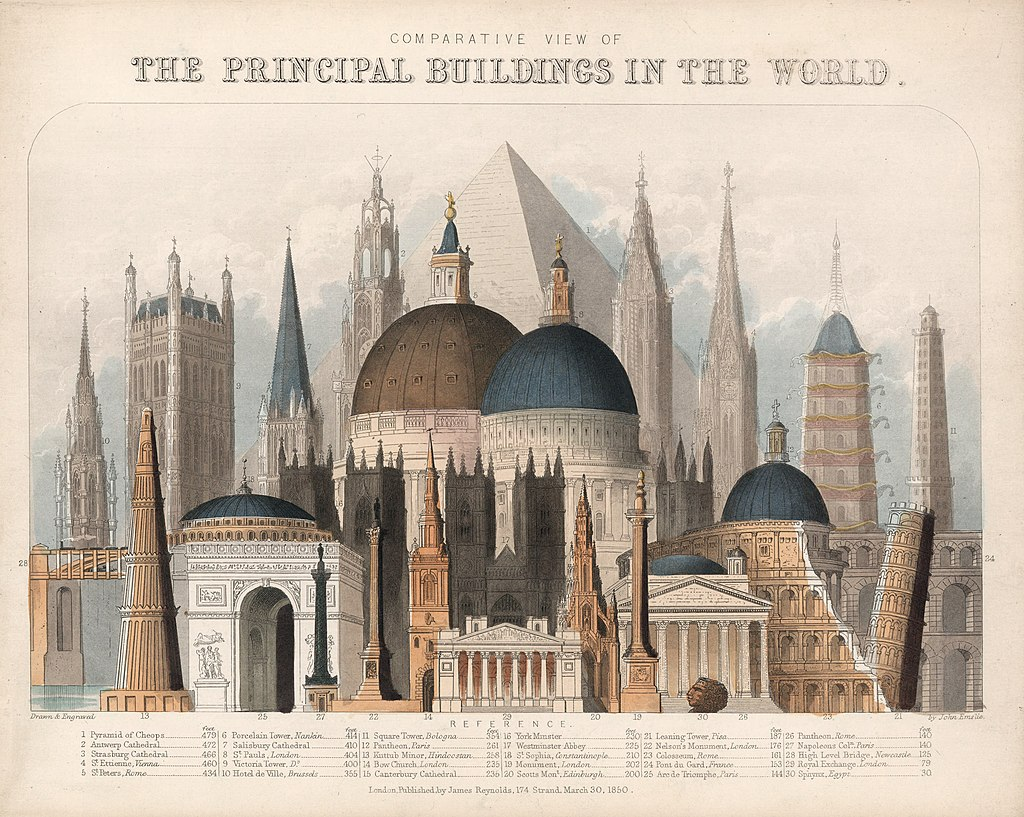 Comparative view of the principal buildings in the world
Comparative view of the principal buildings in the world
3rd Century BC On the Equilibrium of Planes | Archimedes
%20mauritius%20images.jpg?width=600&height=382&name=3rd%20Century%20BC%20On%20the%20Equilibrium%20of%20Planes%20(c)%20mauritius%20images.jpg) On the Equilibrium of Planes (c) mauritius images
On the Equilibrium of Planes (c) mauritius images
The understanding of the physical laws that underpin structural engineering in the Western world dates back to as early as the 3rd century BC. That's right, it's none other than the famous Archimedes. Archimedes published his work On the Equilibrium of Planes. This book includes not only the famous principle of the lever but also calculations on areas and centers of gravity of various geometric figures including triangles, paraboloids, and hemispheres, which underpin most of the mathematics and principles of structures in modern structural engineering.
1st BC De Architectura | Vitruvius
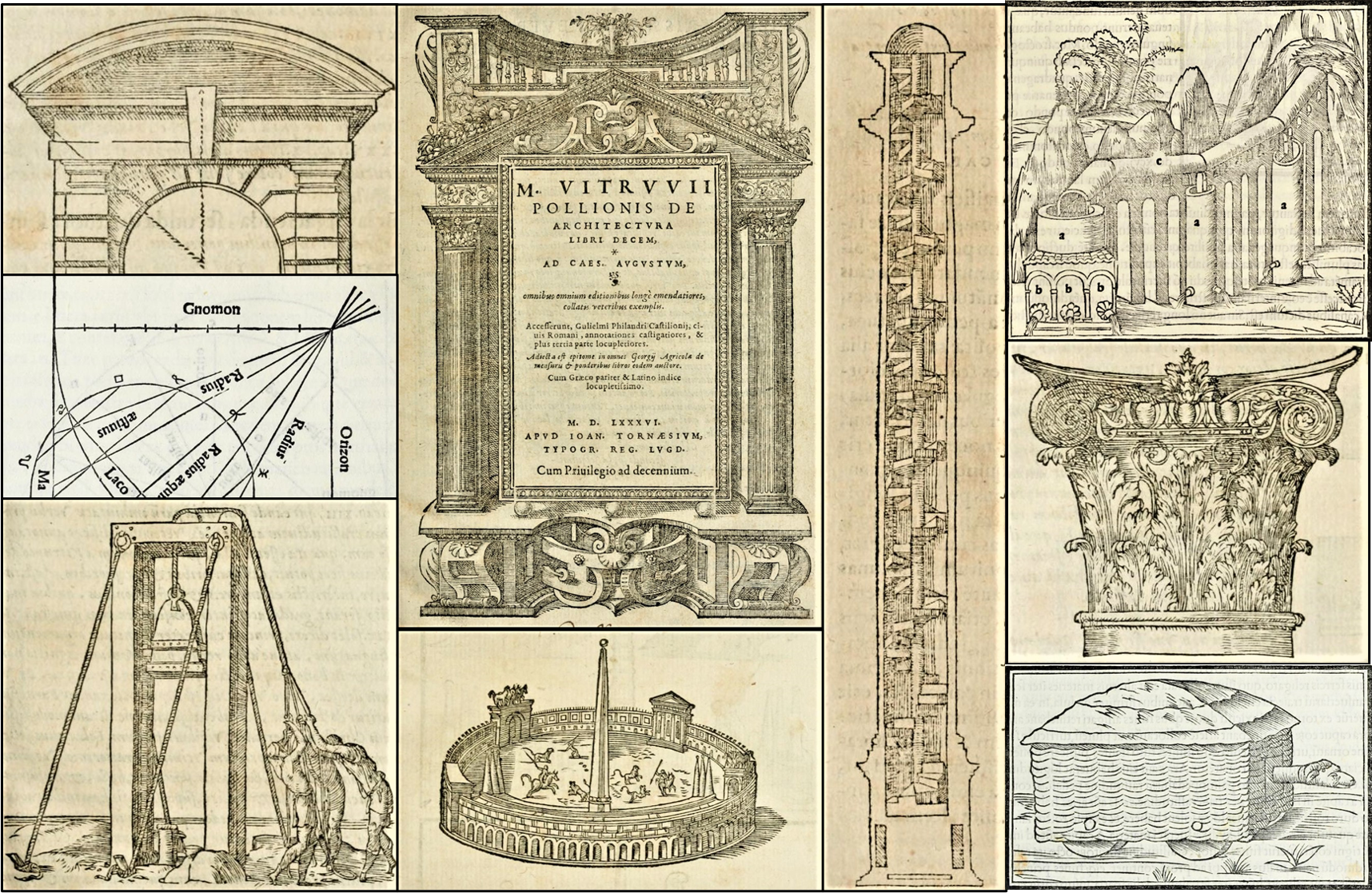 De Architectura (source: Vitruvius on architecture | cabinet)
De Architectura (source: Vitruvius on architecture | cabinet)
The techniques, materials, and equipment employed by the ancient Romans to construct aqueducts, thermae, columns, lighthouses, defensive walls, and harbors are documented by Vitruvius in his De Architectura. One of the most famous architectural structures is the Roman aqueduct bridge known as Pont du Gard. Thanks to the outstanding architectural technology of the time, this bridge has stood for over 2000 years without collapsing and was added to UNESCO's list of World Heritage sites in 1985.

The post on the history of structural engineering after B.C. will be uploaded soon.
References
9500 BC Göbekli Tepe
-Dietrich, Oliver & Schmidt, Klaus. (2010). A Radiocarbon Date from the Wall Plaster of Enclosure D of Göbekli Tepe
-Did Engineering exist before 12,000 years ago?
2560 BC The Great Pyramid of Giza
-Seven Wonders of the Ancient World | National Geographic Education
-James Reynolds & John Emslie, Comparative view of the principal buildings in the world
3rd Century BC On the Equilibrium of Planes
-mauritius images, Image Number 06630196
Topics
#StructuralEngineering
#CivilEngineering
#Infrastructure
#Getmotivated
/Jegeon%20240_240.png)
Hello, I am Jegeon Ryu, a Project Manager responsible for developing MOTIVE for engineers dedicated to creating a safer and better world. During my two years of military service, I learned that creating a safer world is achievable through the sharing of technology and motivating each other. My goal is to contribute to the happiness of the world by creating a global platform that facilitates mutual knowledge sharing and growth.
Profile: Jegeon Ryu
※ Click on the keywords below 'Topics' to view related content.

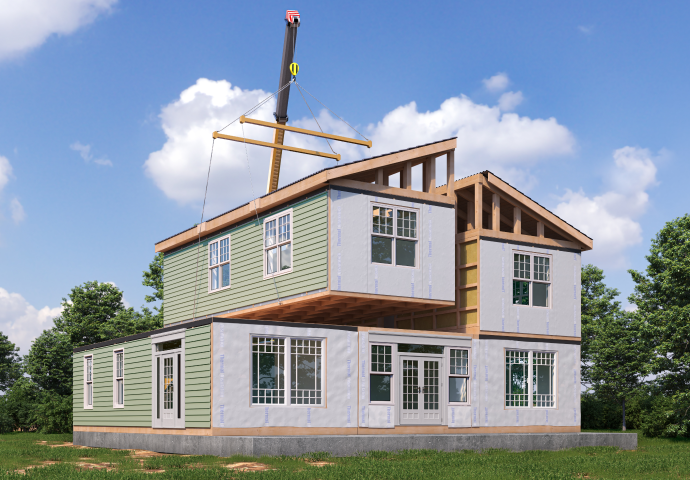





/%EC%A0%84%EA%B7%9C%EC%8B%9D.jpg)


